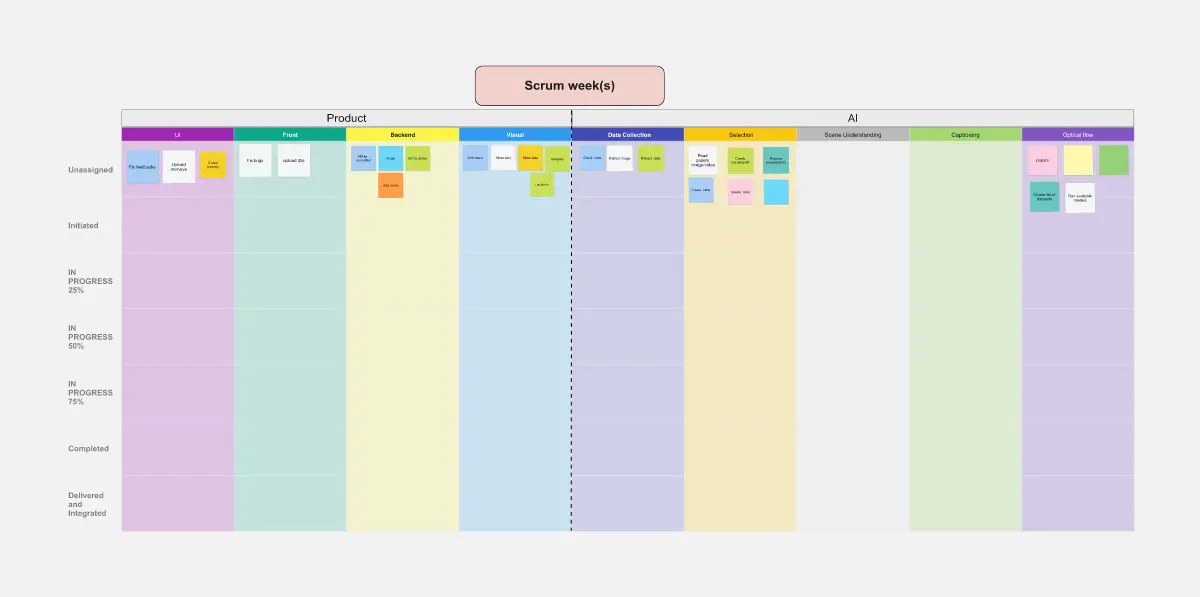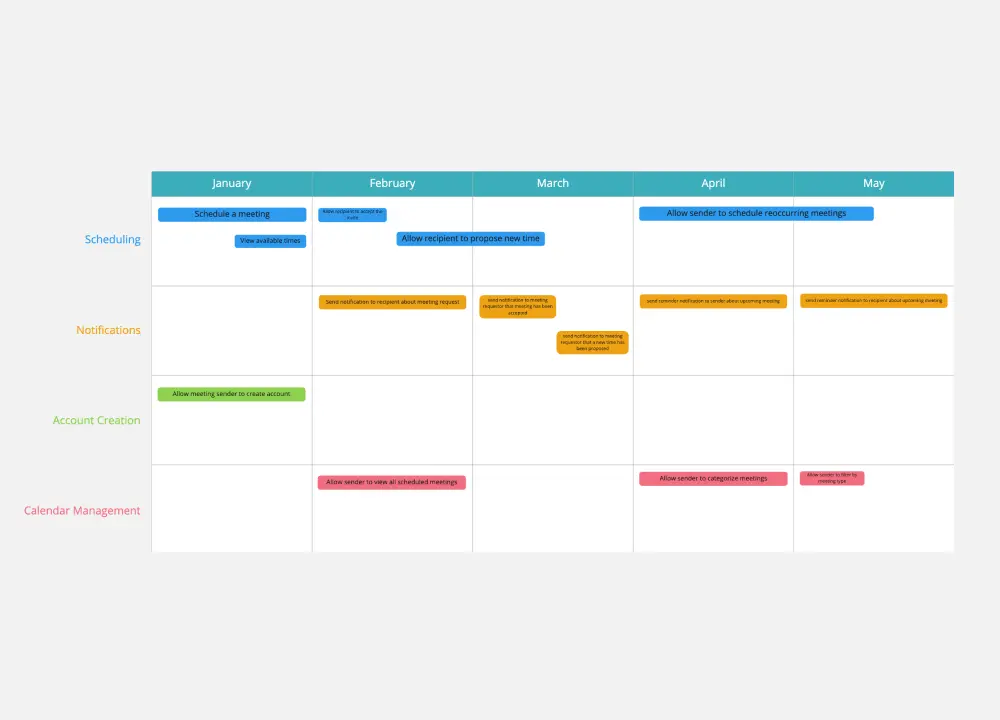Buy A Feature Prioritization Technique
History of The Workshop
The game was initially developed by Luke Hohmann as one of his 12 Innovation Games that help product teams understand the problems their customers face and build solutions to solve those problems.
About This Workshop
Buy-a-feature is a prioritization method in which the product manager and his product team work directly with a group of stakeholders to learn and prioritize which features they value the most.
Multiple organizations worldwide have adopted this technique to prioritize quarterly initiatives and create roadmaps.
How To Use This Template
The Buy-a-Feature game works by giving those stakeholders a limited amount of imaginary cash, pricing each feature, and asking them what features they would buy with the money they are given. As a product manager, this game will uncover the "make it or break it" features and what they are willing to forgo.
1. Prepare the set of features you need to prioritize
First, you must list all the critical features you need to prioritize with your stakeholders. This set of features will differ depending on the type of product you own and developing. This list of features can include product updates like user flow changes, performance enhancements, or bug fixes.
2. Set a price for those features
After listing all the features, you need to prioritize and start setting a price for each. Determine the price of each feature based on the actual cost of development (including product management resources like user research and interviews), time, and resources. Also, negotiation is highly encouraged to uncover valuable insights. Thus, it's a good idea to price at least one desirable feature higher than the amount of "money" given to each stakeholder to see if they will pool together their money for this feature to be prioritized.
3. Give participants a budget
Once you've decided to list your features, priced them, and invited your stakeholders, it's time to give them a budget.
Don't give your stakeholders too much money or too little money. More money will allow them to purchase features without deep thinking. Too little money will not allow your participants to buy the features they need.
4. Observe as participants play
To find out why participants value certain things, it's a good idea for you and your product team to play the role of a shopkeeper. This involves pitching and selling the features, answering questions, and uncovering the thought processes behind participants' purchases.
The game runs until all the allocated artificial money you planned has been spent entirely or until all players have purchased what they want. It's important to note to your participants that it's okay to have money left over at the end, as you don't want people buying features just to get rid of their unspent cash.
5. Review the purchases
Once the game is over, you should pull the notes you recorded and start reviewing the purchased features. You should ask yourself and the product team the following questions:
Why did they discard your cheapest feature?
Why did they choose one feature over another?
Why did those multiple stakeholders pool their resources to buy the most expensive feature?
Categories
Similar templates





